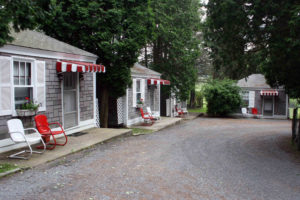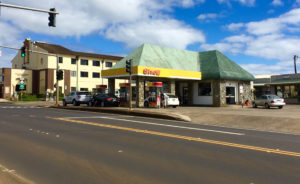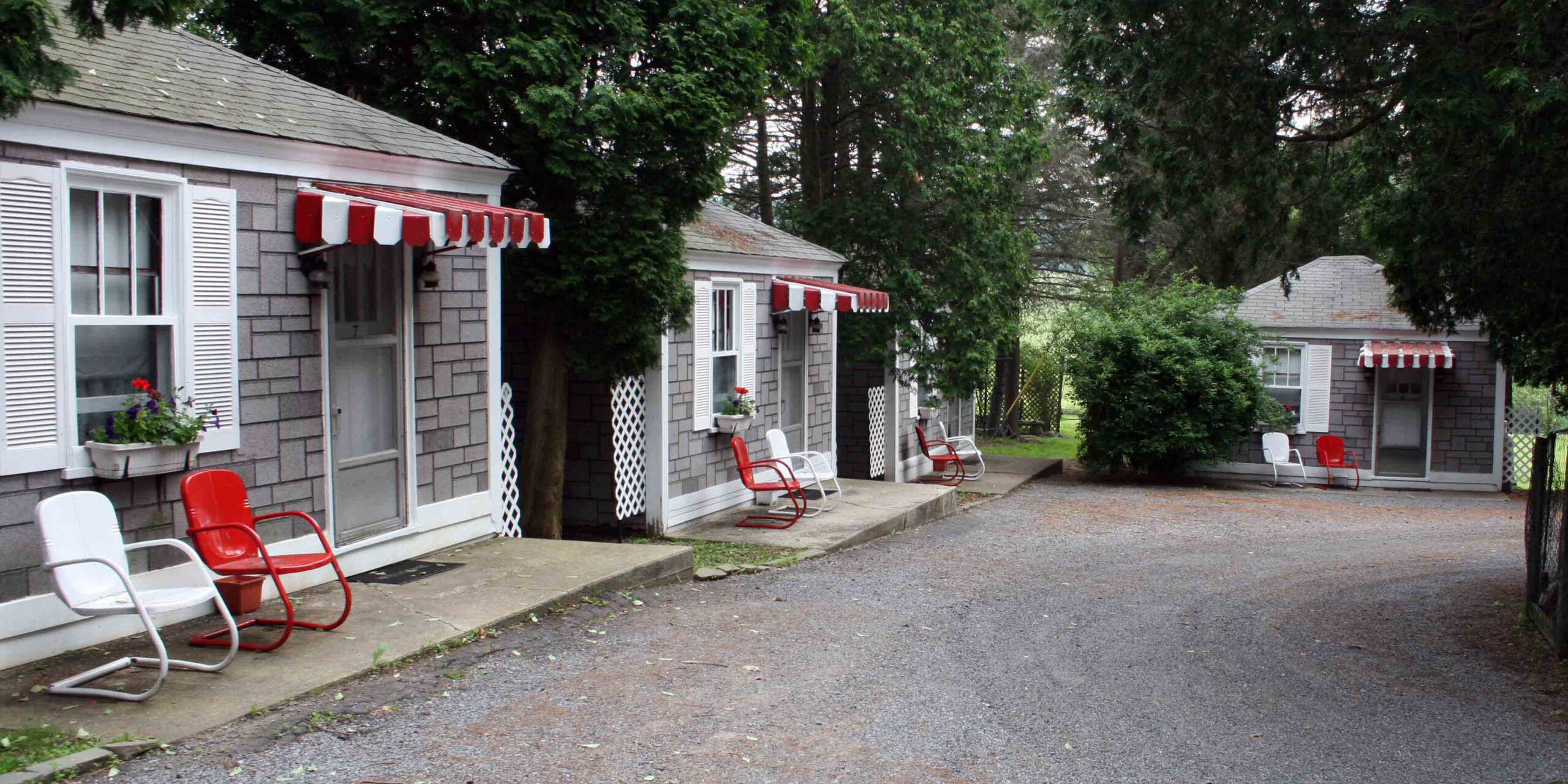
NO. 1: Lincoln Motor Court
5104 Lincoln Highway
Mann’s Choice, PA
History: Constructed between 1938 and 1941, the Lincoln Motor Court is one of the most iconic remaining resources along the Lincoln Highway, the country’s first transcontinental highway. The complex consists of 12 cottages arranged in a “U” around the owner’s residence and motor court office. Since the time of the Court’s completion in the 1940s, it has continuously offered overnight accommodations to travelers except for a short time in the late 1970s and early 1980s. However, most motor courts have disappeared, either being modified into motels by connecting the cottages together, or having been abandoned and demolished.
Threat: The Lincoln Motor Court is facing extensive maintenance issues in the cottages that have become too big financially for the current owners. Several of the cottage roofs are leaking, causing water damage to the interior of the cottages. In addition, the foundations of at least two cottages are breaking apart, threatening the structural integrity of the buildings. Although Preservation PA put the Lincoln Motor Court on their “Most at Risk” list in 2015, and approximately 20 volunteers stayed at the Court in June 2015 to help with the maintenance issues, the threat still remains.
Contact: Debbie Altizer, altizer.debbie@yahoo.com
NO. 2: Log Cabin Grill
2345 Marion Road SE
Rochester, MN
History: In 1945 Ben and Helen Mitchell purchase a ten-acre parcel outside of Rochester, Minnesota, and developed a cottage motel meant to be a home away from home for people visiting the Mayo Clinic. In 1947, one of the cabins was converted into a grocery store and Texaco gas station. In 1957, the building was added onto and became the Log Cabin Grill. The approximately 700 square foot building made for a small restaurant, having a seating capacity of 15 patrons at a horseshoe counter and two booths. The Log Cabin Grill closed in due to the declining health of Helen Mitchell, still alive at 97 years of age.
Threat: In 2014, the Preservation Alliance of Minnesota declared the Log Cabin Grill a property of interest for preserving. However, the threat is that no alternative for a future will be found for the Grill. The members of the family no longer live in the Rochester area and have no interest in maintaining the site for the remaining motel cabin or grill. Although the family is willing to donate the building to a governmental/charitable organization, finding a location, moving the building, and securing funding for renovations remain obstacles.
Contact: LaRee Mitchell Ewers, lareeewers@verizon.net

NO. 3: Lihue Motor Service Station
3-3178 Kuhio Highway
Lihue, HI
History: When the Lihue Motor Service Station was built in 1930, it was the golden age of buildings service stations to resemble regional architecture or eye-popping novelties, such as teapots or large shells. As a result, the Lihue Motor Service Station was built to resemble a traditional Hawaiian structure, employing lava-rock columns and a combed-concrete roof made to look like a thatched roof. Since the time of its construction, the service station has remained in business, today operating as the Lihue Shell Station.
Threat: Aloha Petroleum submitted a demolition permit request with the county planning department, although it was later withdrawn. Currently, the gas station doesn’t have sufficient storage capacity, and the company also has safety concerns over the relatively small entrance and exit area at the front and surrounding the pumps. Since the company has convenience stores in addition to gas stations, it seems that adaptive reuse could easily be employed, especially since the building has been determined eligible for listing on the National Register of Historic Places.
Contact: Pat Griffin, patgriffin@hawaiiantel.net
NO. 4: Colfax Avenue Neon Signs
Denver, Lakewood, and Aurora, CO
History: Historically, Colfax Avenue through Denver, Lakewood, and Aurora, Colorado, was known as the “Gateway to the Rockies” before Interstate 70 was completed through the area. (Today, Colfax Avenue is the route of U.S. 40 through the area.) In order to compete for the business of travelers through the Denver area in the mid-twentieth century, many businesses on Colfax Avenue erected elaborate neon signs in order to help lure travelers to their businesses. Several of these signs remain along the corridor today.
Threat: The neon signs on Colfax Avenue face several threats. First, as the Colfax Avenue corridor reawakens, there is pressure for redevelopment of the corridor. Abandoned properties along the corridor are often razed, along with their neon signs. Second, the high-quality materials that were used to make the signs originally make them expensive to maintain today, and it is often cheaper to replace the signs rather than repair them. Lastly, as new businesses open in existing buildings, many signs are demolished for signs for the new business. The threats to the signs on Colfax Avenue led Colorado Preservation, Inc., to place the signs in their 2014 Most Endangered Places Program.
Contact: Jennifer Orrigo Charles, jorrigocharles@coloradopreservation.org


